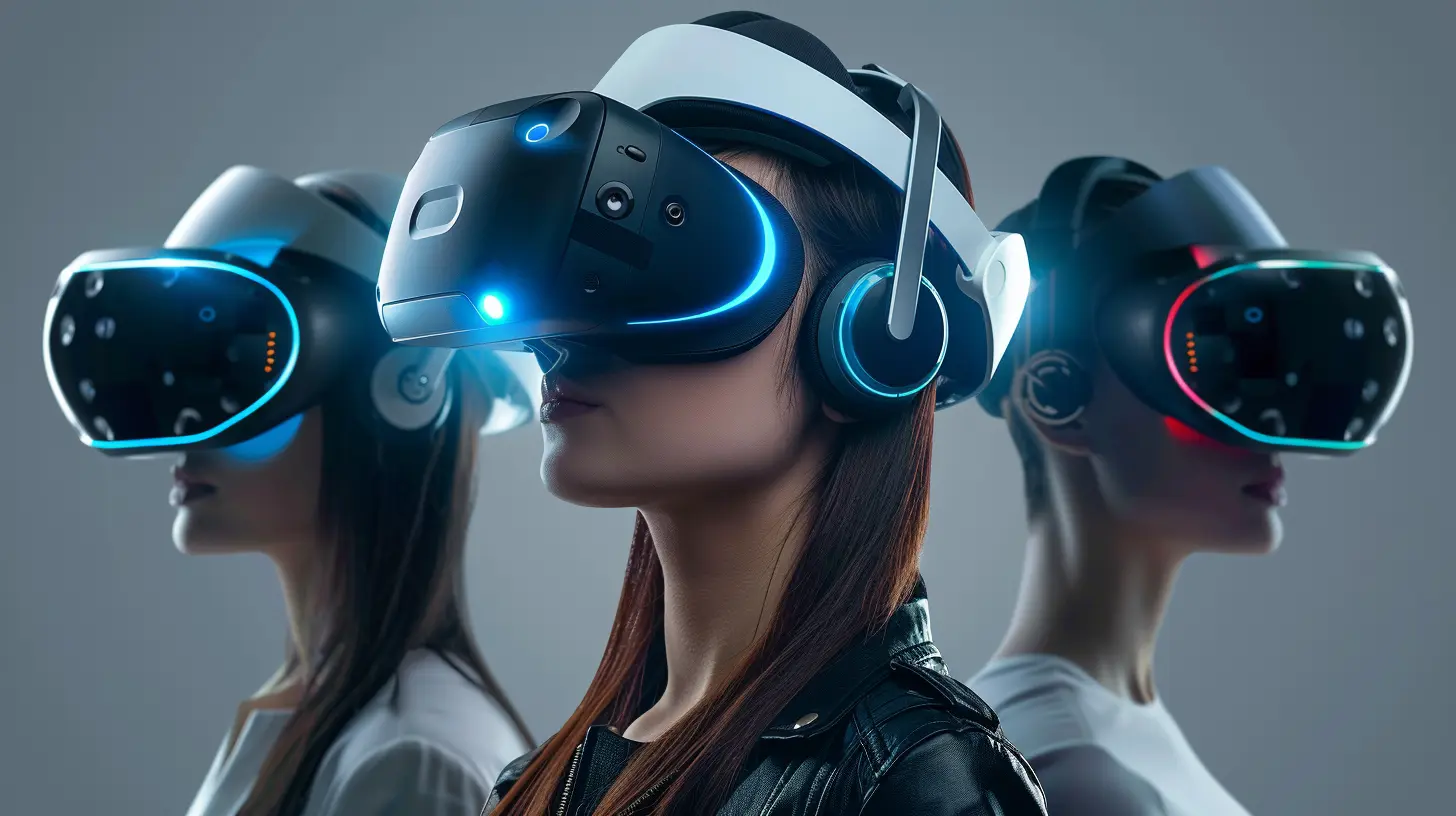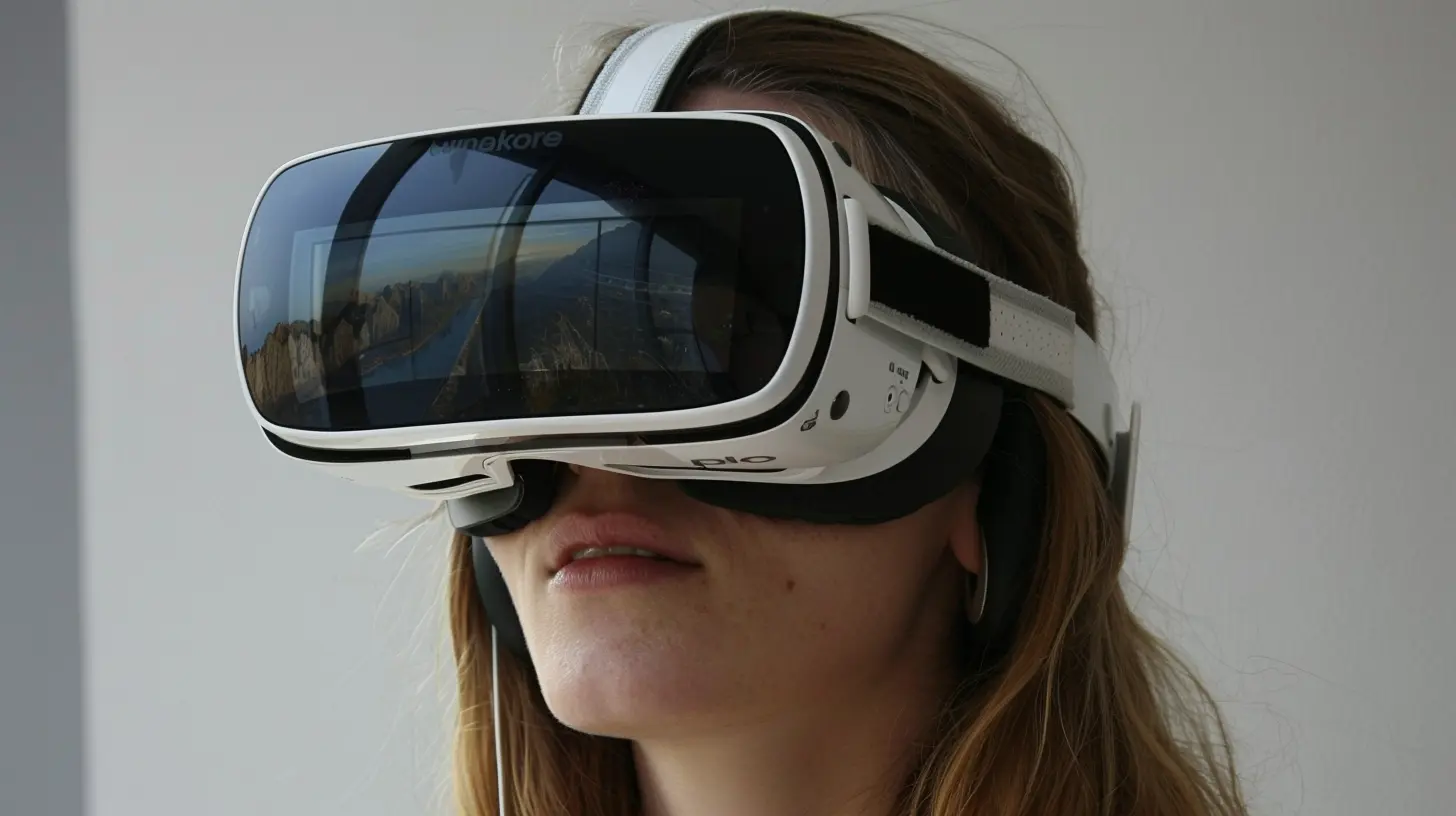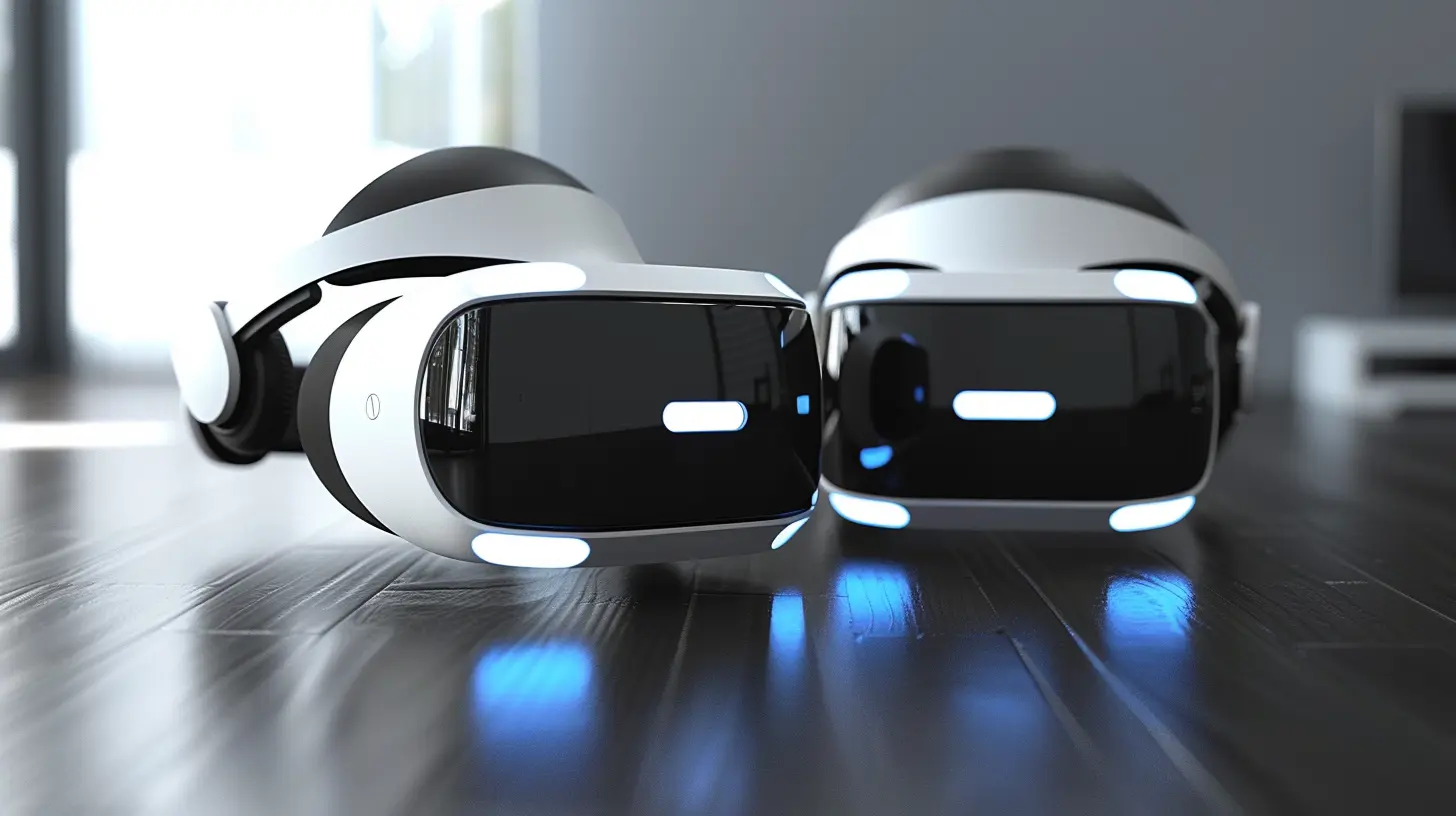The Top Safety Tips for Using Your VR Headset
27 January 2025
Virtual Reality (VR) is an exciting, immersive technology that has taken gaming, education, and entertainment to a whole new level. Whether you're exploring new worlds, engaging in high-octane games, or attending virtual meetings, VR headsets offer a cutting-edge experience. But let's face it — as thrilling as VR is, it comes with its own set of risks.
The last thing you want is to end up knocking over your favorite lamp, getting dizzy, or worse, injuring yourself while using your VR headset. So, how do you stay safe while enjoying your virtual adventures? I've got you covered! In this article, we'll dive into the top safety tips for using your VR headset, ensuring you can explore these digital realms without any real-world complications.

1. Create a Safe Play Area
Before you even put on your VR headset, the first thing you should do is set up a safe, spacious play area. Most VR experiences involve a lot of movement — you might be reaching, ducking, or even walking around. And trust me, nothing kills the fun faster than bumping into a wall or tripping over a coffee table.How Much Space Do You Need?
A good rule of thumb is to have at least 6.5 x 6.5 feet (2 x 2 meters) of clear area to move around. This will give you enough room to stretch out your arms without hitting anything. If you can clear out a bigger space, even better! Be sure to remove any obstacles like furniture, lamps, or loose cables that could cause you to trip or fall.If you’re in a smaller room, some VR headsets offer a seated mode. Although you won’t be able to move as freely, it’s a safer option if space is tight.
Pro Tip: Use Virtual Boundaries
Most VR headsets come with built-in boundary systems. For example, the Oculus Guardian or PlayStation VR’s chaperone system will alert you when you're getting too close to the edge of your play area. These are your virtual safety nets — make sure to set them up properly!
2. Protect Your Eyes and Skin
VR headsets sit snugly on your face, which means they’re in close contact with your skin and eyes. Prolonged use can lead to discomfort or even damage if you're not careful.Give Your Eyes a Break
Ever heard of Digital Eye Strain? Staring at a screen for hours on end can lead to eye fatigue, headaches, and blurry vision. Now, imagine doing that in VR, where the screen is just millimeters from your eyes. Yikes, right?To avoid eye strain, follow the 20-20-20 rule: every 20 minutes, take a 20-second break and look at something 20 feet away. This will help your eyes refocus and prevent that dreaded eye fatigue.
Clean Your Headset Regularly
Your VR headset can become a breeding ground for bacteria, especially if you're sharing it with others. Make a habit of cleaning the foam padding and lenses regularly with a microfiber cloth and a specialized disinfectant. Trust me, your skin will thank you later!
3. Mind Your Cables and Controllers
If you’re using a wired VR headset, then cables can become a tripping hazard. One moment you're slashing away at virtual enemies, and the next moment you're tangled up in cords like a marionette.Keep Cables Organized
Consider using cable management systems to keep wires out of your way. Some gamers even use hooks on the ceiling to guide cables overhead, freeing up floor space. If that’s too much work, just make sure your cables are neatly tucked away to the side where you won’t accidentally trip on them.Watch Out for Your Controllers
Controllers are basically extensions of your hands in VR, but that doesn’t mean they’re immune to real-world mishaps. Make sure your controllers have straps and that you wear them properly. The last thing you want is to send a controller flying across the room during an intense session!
4. Stay Aware of Your Surroundings
It’s easy to get lost in a virtual world, but remember, you’re still in the real one! Staying mindful of your surroundings is crucial to avoiding accidents.Keep Pets and People Out of the Play Area
Imagine you’re dodging bullets in a VR game, and suddenly your dog walks into the room. Disaster, right? Make sure pets, kids, or anyone else stays out of your play area while you're using your VR headset. Not only could you accidentally hit them, but they could also startle you, leading to a dangerous mishap.Use a Spotter for Extra Safety
If you’re trying out a new VR game or experience, it might be a good idea to have someone nearby to keep an eye on you. They can alert you if you're getting too close to a wall or if something unexpected happens. Think of them as your real-life safety net.5. Take Frequent Breaks
Ever been so immersed in a game that you lost track of time? It happens to the best of us, but spending too much time in VR can lead to fatigue, nausea, or even motion sickness.Set a Timer
Your body isn’t designed to be in a virtual world for hours on end. A good rule is to take a 10-15 minute break every hour. Set a timer if you need to! This will help you stay refreshed and prevent discomfort.Motion Sickness? Try Seated Experiences
If you’re prone to motion sickness, certain VR games or apps can make it worse, especially those with fast movements or flying. If you start feeling dizzy or nauseous, switch to a seated experience or choose games with "teleport" movement controls. These reduce the likelihood of motion sickness by limiting abrupt movements.
6. Adjust the Headset Properly
VR headsets are designed to fit snugly on your head, but improper adjustment can lead to discomfort, blurry visuals, or even injury.Find the Right Fit
Make sure the straps on your VR headset are adjusted to fit your head perfectly. It should feel snug but not too tight. If it’s too loose, the headset might shift during gameplay, making the visuals blurry or causing discomfort. If it's too tight, it could lead to headaches.Ensure Proper Lens Alignment
Most VR headsets allow you to adjust the distance between the lenses to match the distance between your eyes. This is called interpupillary distance (IPD). Setting this correctly is crucial for a clear, comfortable experience. If the lenses aren’t aligned properly, you might experience blurriness or eye strain.7. Look Out for Overheating
It’s not just your gaming console or PC that can overheat — your VR headset can too, especially during extended play sessions.Keep an Eye on Overheating Issues
Some VR headsets, like the Oculus Quest 2, can get quite warm during prolonged use. If you notice your headset heating up, it’s a good idea to turn it off and give it some time to cool down. Overheating can not only degrade performance but also damage the hardware over time.Ensure Ventilation
Make sure you’re using your VR headset in a well-ventilated room. Avoid using it in extremely hot or humid environments, as this can exacerbate overheating issues. And if you’re gaming for long periods, take breaks to let both you and the device cool off.
8. Be Careful with Prolonged Use
Let’s be honest: VR is addictive! But too much of anything isn’t good for you. Spending extended periods in VR can lead to everything from physical fatigue to mental burnout.Listen to Your Body
If you start feeling tired, sore, or mentally drained, it’s time to take a break. VR can be physically demanding — it’s not just your mind that’s working, but your body too. Long sessions can lead to fatigue or even strain certain muscles, especially those in your neck, shoulders, and back.Balance VR with Real Life
VR is amazing, but don’t forget to balance it with real-world activities. Go for a walk, stretch, or do something outside of the virtual world to keep your body and mind healthy.9. Keep Your Headset Away from Direct Sunlight
This might seem like an odd tip, but VR headsets are particularly sensitive to sunlight. The lenses inside can magnify sunlight, which can damage the display.Store Your Headset Properly
When you’re not using your VR headset, store it in a safe, shaded place. Never leave it in direct sunlight, especially near windows. This is one of the most common ways VR headsets get damaged, and it’s easily avoidable.
Conclusion
There’s no denying it — VR is one of the coolest tech innovations of our time. But with great power comes great responsibility, right? Whether you’re a seasoned VR user or you’re just starting out, following these safety tips will help you get the most out of your VR experience without risking injury or damaging your equipment.So, before you dive into your next virtual world, take a moment to ensure your surroundings are safe, your headset is properly adjusted, and you’re taking care of your body and eyes. Trust me, future-you will thank you!
all images in this post were generated using AI tools
Category:
Vr HeadsetsAuthor:

Jerry Graham
Discussion
rate this article
16 comments
Zaren McBride
Remember: your coffee table isn't a portal—no one wants to see a VR faceplant video!
February 12, 2025 at 1:48 PM

Jerry Graham
Thanks for the reminder! Safety first—let's keep our VR adventures fun and injury-free!
Xylo McDonough
This article provides essential safety tips for VR headset users. It's crucial to prioritize awareness of your surroundings and take regular breaks to prevent discomfort and disorientation while enjoying immersive experiences.
February 11, 2025 at 7:36 PM

Jerry Graham
Thank you for your feedback! I'm glad you found the safety tips valuable. Prioritizing awareness and taking breaks are indeed key to a safe and enjoyable VR experience.
Maxine Hubbard
Remember, folks: your VR headset won’t protect you from tripping over the dog, walking into walls, or accidentally smacking your drink off the table. So, in addition to safety tips, maybe invest in a helmet and a slightly more obedient pet!
February 7, 2025 at 5:26 AM

Jerry Graham
Great point! Safety in VR goes beyond tips—it's about awareness of your surroundings and securing your space. A helmet and a well-trained pet could definitely help!
Haze Bailey
Great tips! VR can be such a fun escape, but safety is key. I’ve definitely tripped over my coffee table a few times—definitely need to clear the space first!
February 6, 2025 at 9:41 PM

Jerry Graham
Thanks for sharing your experience! Clearing the space is crucial for a safe and enjoyable VR experience. Stay safe and have fun!
Alexa Roth
When using a VR headset, prioritize physical safety by ensuring a clear play area, taking regular breaks to avoid eye strain, and being aware of your surroundings. Proper usage enhances your experience while minimizing potential risks and injuries.
February 6, 2025 at 5:11 AM

Jerry Graham
Great reminders! Prioritizing safety really enhances the VR experience. Thank you for sharing!
Vera McCracken
“Remember, while you're exploring virtual worlds, keep an eye on your real-world coffee cup! The last thing you want is to accidentally join a zombie horde while your mug becomes a casualty of your VR adventures. Safety first, caffeine second!” ☕️🕶️👾
February 4, 2025 at 12:38 PM

Jerry Graham
Great reminder! Prioritizing safety in the real world ensures a more enjoyable VR experience. Stay alert! ☕️🕶️
Noemi Martin
Remember, while your VR headset transports you to distant realms, it won't save you from the coffee table! Safety first—because no one wants a virtual adventure to end with a real-world bruise!
February 4, 2025 at 5:58 AM

Jerry Graham
Great point! Staying aware of your surroundings is crucial for a safe and enjoyable VR experience. Thanks for the reminder!
William McKenzie
Prioritize safety for an optimal VR experience; don’t compromise your well-being for immersion—stay aware and follow guidelines.
February 2, 2025 at 8:32 PM

Jerry Graham
Thank you for emphasizing the importance of safety! Prioritizing well-being is essential for an enjoyable VR experience.
Makayla McFadden
While immersive experiences in VR are captivating, prioritizing safety is crucial. Regular breaks, a clear play area, and mindful usage can enhance your enjoyment while minimizing risks. Stay aware!
February 2, 2025 at 1:21 PM

Jerry Graham
Thank you for emphasizing the importance of safety! Regular breaks and a clear play area are indeed key to a fun and safe VR experience. Stay safe and enjoy!
Niko Fisher
Essential tips for safe and enjoyable VR experiences!
February 1, 2025 at 9:09 PM

Jerry Graham
Thank you! Ensuring safety enhances enjoyment—glad you found the tips helpful!
Iris McMahan
Safety in virtual reality is paramount; awareness of your surroundings, taking regular breaks, and ensuring proper headset fit are crucial. By prioritizing safety, users can enjoy immersive experiences without compromising their physical well-being. Remember, a safe user enhances the overall VR journey.
February 1, 2025 at 12:59 PM

Jerry Graham
Absolutely! Prioritizing safety is essential for a great VR experience. Awareness, breaks, and proper fit make all the difference. Thanks for highlighting these important tips!
Ace McClellan
Great tips! Safety first makes VR experiences even more enjoyable.
January 30, 2025 at 9:53 PM

Jerry Graham
Thank you! I'm glad you found the tips helpful. Safety truly enhances the VR experience!
Lucy McGhee
Great tips! I always forget to check my surroundings before diving into VR. It’s amazing how immersive it gets—sometimes I just need a friendly reminder to stay safe!
January 29, 2025 at 9:54 PM

Jerry Graham
Thanks for your feedback! Staying aware of your surroundings is crucial for a safe VR experience. Happy gaming!
Ford Barrett
Great insights! I always wondered how VR could impact our physical safety while immersing in virtual worlds. It’s fascinating to see tips that balance excitement with mindfulness. I’m eager to implement these strategies and enhance my VR experience safely!
January 29, 2025 at 6:03 AM

Jerry Graham
Thank you for your comment! I'm glad you found the tips helpful. Enjoy your VR experience while staying safe!
Zephyros Gates
VR is an exhilarating escape, but don't forget the real world around you! Safety first: clear your play space, take breaks to avoid nausea, and keep those cables in check. After all, the only thing worse than a virtual fall is a real one!
January 28, 2025 at 7:49 PM

Jerry Graham
Absolutely! It's crucial to balance the excitement of VR with safety precautions. A clear space and regular breaks are essential for a safe experience. Thanks for highlighting these important tips!
Priscilla McGinnis
Great tips for safe VR experiences!
January 28, 2025 at 12:27 PM

Jerry Graham
Thank you! I'm glad you found the tips helpful for ensuring safe VR experiences.
MORE POSTS

The Power of Chatbots in E-Commerce Customer Service

The Role of IoT in Home Automation: What’s Next?

How Smart Security Cameras are Redefining Home Safety

The Role of 5G in Accelerating Digital Innovation

Digital Transformation in Healthcare: From Telemedicine to AI

The Evolution of E-Commerce Loyalty Programs

The Pros and Cons of Using a Digital Assistant in Your Daily Life

Smart Garden Gadgets for the Eco-Conscious Homeowner

Smart Appliances: Revolutionizing the Modern Kitchen

The Importance of Data Literacy in the Modern Workforce